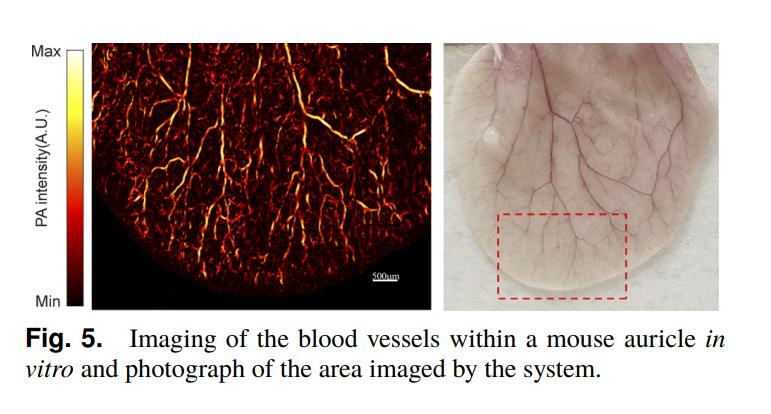Application of Microchip Lasers in Photoacoustic Imaging Research
Due to the limitations of traditional optical imaging methods in achieving high-resolution imaging in strongly scattering biological tissues, Photoacoustic Imaging (PAI) technology, based on the photoacoustic effect, has emerged as a new imaging tool in the field of biomedical research. PAI combines the high contrast and spectral recognition characteristics of optical imaging with the deep penetration depth of ultrasound imaging.
PAI involves irradiating the target object with short-pulsed laser light. The absorbed light energy causes a local temperature increase, resulting in thermoelastic expansion and the generation of ultrasound waves. By detecting the ultrasound signals, the distribution of light absorption in the target object can be reconstructed, providing a depth image of the object. PAI can be categorized into Photoacoustic Tomography (PAT) and Photoacoustic Microscopy (PAM). This imaging technique has proven valuable in various biomedical applications, including imaging of tumor neovascularization, hemoglobin and oxygen concentration, breast cancer diagnosis, and vulnerable plaques in cardiovascular and cerebral vessels.

Reallight’s Subnanosecond microchip laser
Photoacoustic Microscopy (PAM) combines the advantages of optical and ultrasound imaging. As a non-invasive imaging mode, PAM has been successfully used in the study of cells, microvessels, and tissues in recent years. When imaging biological tissues using photoacoustic methods, the primary absorber is vascular tissue, with capillaries having a minimum diameter of about 4 μm. The thermal confinement time is approximately 0.2 ms, and the pressure confinement time is around 1.3 ns. Therefore, using lasers with pulse widths less than 1.3 ns is crucial to prevent thermal diffusion during the optical radiation stage. Short-pulsed lasers with widths below 1.5 ns effectively enhance the resolution of photoacoustic imaging.

Photoacoustic microscopic imaging effect-mouse ear capillaries (picture taken from reference [1])
The MC series femtosecond microchip lasers produced by Reallight have various pulse widths, including 1.5 ns, 750 ps, and 350 ps, meeting the resolution requirements of photoacoustic detection. With repetition rates reaching the kHz level, these femtosecond microchip lasers significantly improve the efficiency of photoacoustic detection, offering an optimal choice for photoacoustic microscopy.
In Optics Letters in June 2022, the team of teacher Ma Zhenhe from the School of Engineering Control of Northeastern University Qinhuangdao Branch recently published a paper titled: Spectra interference contrast based non-contact photoacoustic microscopy realized by SDOCT, which introduced a new photoacoustic microscopy (PAM) detection method, combining photoacoustic and Optical Coherence Tomography (OCT) technologies. The team utilized a Sub-nanosecond microchip laser (MCA-532-2.5-060, 532nm, 1.5 ns, 2.5 kHz, 60 μJ) provided by Reallight to achieve clear imaging of capillaries. This innovative approach contributes to the further application of photoacoustic imaging technology in this field.
Disclaimer: Some content in this article is sourced from the internet for technical research and exchange purposes, and is provided for reference and learning. If there are inaccuracies or academic discrepancies, corrections are welcome. If there are copyright issues, please contact us for prompt verification and removal.
References
Zhenhe Ma,1,2 Ning Ding,3 Zhen Li,1 Keliang Zhu,1 Ang Li,1 Zhanhong Lin,1 Yi Wang,1,2 Yuqian Zhao,1 Yao Yu,1,2 Jingmin Luan,4 Xin Zhu,5 AND Jian Liu1,2,∗,Spectral interference contrast based non-contact photoacoustic microscopy realized by SDOCT [J] Optics Letters ,Vol.47,No11/1 June 2022


